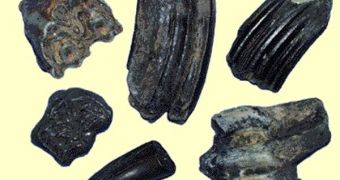Lately, with the influence of global warming rising worldwide, animal experts said that the rise in temperatures might catch many species off-guard, as in unable to modify their behavioral patterns fast enough to survive. They also said that this situation would lead to a massive extinction among species, especially in the higher ones, such as mammals and birds, as well as in fish. Now, a new study, conducted on fossilized teeth, shows that animals may in fact be able to adapt to climate change faster and better than first predicted.
The research focused on two set of teeth, found in Florida, and spanning several centuries inside an ice age, with massive temperature fluctuations recorded around the world. During that climate cycle, animals proved able to withstand the test of climate change, and adapted their bodies and their diets to the conditions at hand.
“One of the main assumptions is that species niches are conserved. Here we’re showing that the diets vary and change. These niches are not the same. The animals were not doing the same thing constantly through time,” explained Florida Museum of Natural History zoologist Larisa DeSantis, quoted by Wired. According to a previous scientific study, published in the journal Nature in 2004, about 25 percent of all species were doomed to extinction within five decades, if temperatures worldwide increased by as little as 6 degrees Fahrenheit. This predicted temperature rise is in tune with the estimates released by the Intergovernmental Panel on Climate Change (IPCC).
“I don’t think you can use this study as a model for what’s going to happen to a given species. But it does say that if we have global warming, then there will be changes to animals, and those changes will be complex. It’s hard to understand what global warming is going to do,” added New York State Museum vertebrate paleontologist Robert Feranec, who is also the co-author of a new research on the issue. The paper appears in the June 2 issue of the open-access journal Public Library of Science PLoS ONE.
“Most of the models that we use to project future change assume that species will continue doing in the future what they do today. As the authors point out, these models don’t account for flexibility in the tolerances of some species,” added University of Notre Dame ecologist Jessica Hellmann.
For the new research, the expert analyzed 111 fossil teeth coming from 11 species of animals, including mammoths, llamas, deer and horses. The remains span a time frame between 1.9 and 1.3 million years ago, which places them in the middle of an ice age, and during full glacier retreat, respectively. The research shows that, when the situation demanded it, all species learned to live off other food than they would have normally eaten, while some, such as the tapir, even learned to relay on water for a steady source of sustenance.

 14 DAY TRIAL //
14 DAY TRIAL //